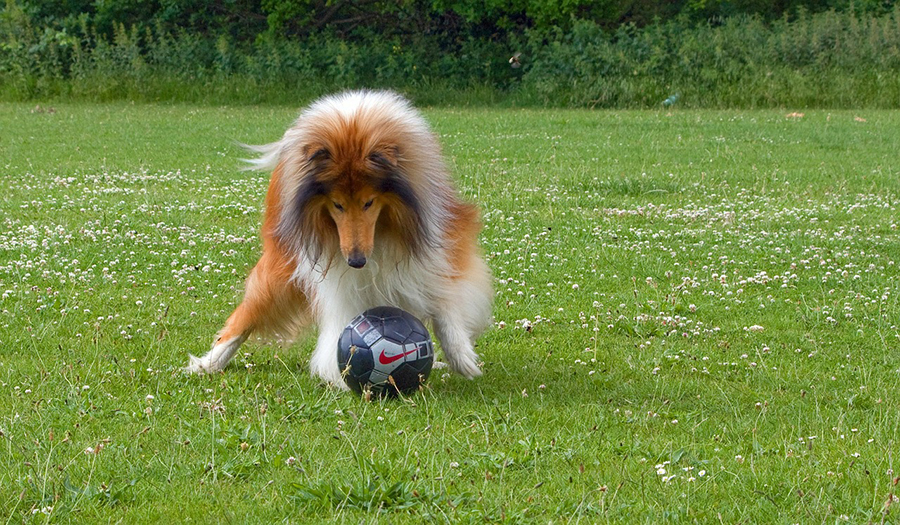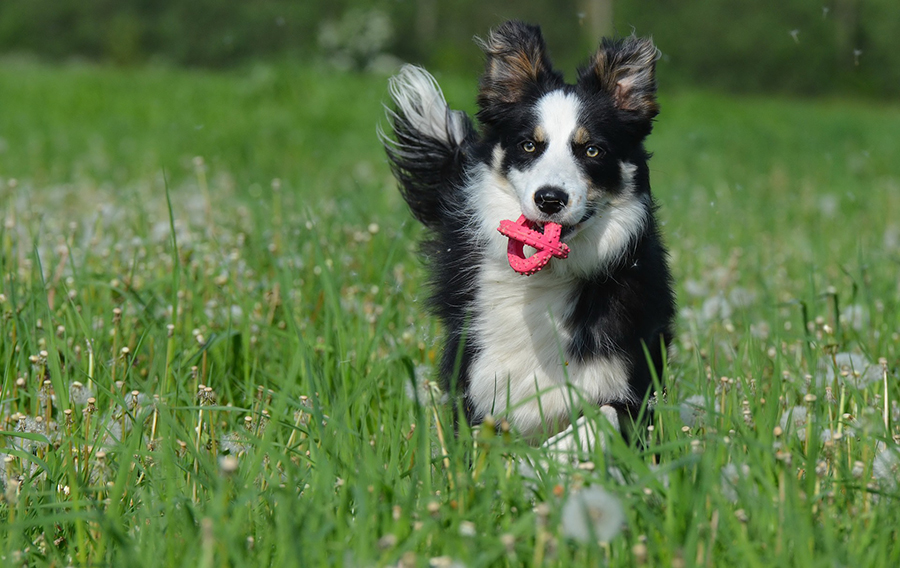Training Resources
Often times we feel that our dogs aren’t listening, do not seem to be able to contain themselves and are generally acting like they’re in their “terrible twos.” This very definitely could be a lack of training, but many times is also wholly or in part due to a lack of exercise with our canine companion. We would like to provide information below on both topics.
TSCR promotes positive, force-free training methods and not does recommend methods that utilize prong or shock collars or compulsion training. We do recommend seeking a behaviorist or professional trainer to work with you on any issues that you may be experiencing with your dog. We also recommend taking your dog to a basic obedience class.
Guidelines for Exercising Your Pet
Do you feel guilty that your pet doesn’t get enough time with you? It’s a trap that happens to most of us, but one that can be easily remedied. Here are some guidelines for enriching your pet’s life and health through exercise.
Why Exercising Your Dog Makes Sense

Big or small, young or old, dogs need to exercise daily. While some breeds have special needs that have to be taken into account, and dogs do slow down as they age, all dogs still need to take part in some form of daily physical activity. Without activity, your dog will become bored, frustrated, and unhealthy. Exercise tones the muscles, helps the body and metabolic system to function properly, and engages the mind. Anyone who has had a dog that suffers from lack of physical activity and mental stimulation will tell you that they will often turn to destructive behaviors—behaviors that magically disappear once the dog is getting enough exercise everyday.
Physically, dogs will also become obese if they are not allowed to burn off the calories that they take in during the day. This is especially true if they are being given a lot of treats in compensation for lack of attention.
How Much is Too Much Exercise?
Though exercise needs are based on a dog’s age, breed, size, and overall health, your dog should spend between 30 minutes to 2 hours on an activity every day. Breeds in the hunting, working, or herding groups (e.g., Labrador retrievers, hounds, Collies, and shepherds) will need the most exercise. If your dog is in one of these groups and is in good health, he or she should be getting at least 30 minutes of rigorous exercise along with 1-2 hours of daily activity.
Requirements aren’t as easily established for every other dog. Because most dogs are of mixed heritage, their needs will be different depending on the breed(s) they are descended from. If your dog is a short-nosed breed, like a bulldog, for example, he will not need a lot of daily exercise. A casual walk around the neighborhood will be sufficient. Pay attention to your dog’s signals. If he is restless or pacing, he is probably itching to get out for a nice long walk. If, on the other hand, your dog is content to just lie around, there may not be such a great need for exercise. A short walk will be enough to keep everything in order.
Dogs that are less active or older may have conditions that are slowing them down. Whether it is because of too much weight, achy joints and muscles, or a preference to just mellow out most of the time, they still need some activity to keep their bodies working as they should.
Even dogs with disabilities that affect their mobility, like those that use specially equipped wheelchairs or carts, often enjoy a walk through the neighborhood. Some can even continue to take part in water activities! (Note: water activities are also great for senior dogs who enjoy them because they do not put any weight on their joints!)
If you have any concerns about whether your dog can handle a long walk, or whether you should implement an exercise plan for her, talk to your veterinarian. You don’t want to pressure your dog into doing things that are too strenuous—or you could end up with bigger problems. Start slow if your dog has not been accustomed to being physically active, and observe her response, adding more activities or more mileage as she gets stronger. Your dog should be happily tired, not exhausted, when you are done exercising her for the day.
Tips Before Beginning an Exercise Program
Before you begin an exercise program with your dog, be sure to visit your veterinarian for a health check. Your doctor can recommend an exercise plan that is appropriate for your dog’s age, breed, and condition. Plan to start out slowly and work your way up to longer walking or playing routines as they seem suitable. Additionally, don’t forget to allow for a warm-up period and cool-down time at the end of your session. A leisurely walk to the park or around the block before exercise should be enough to warm the muscles and prepare them for a serious game of catch.
And don’t forget that mental stimulation is just as important as physical exercise! Don’t be afraid of taking new running paths with your dog, going to different dog parks in your area, or introducing new toys and games to your routine. Most importantly, spend time exercising daily, not just on the weekends, even if only for a short time. At the very least, dogs and humans alike can benefit from 30 minutes of physical activity each day. Start simple, without putting pressure on yourself or your dog, and you will find that you are both looking forward to this happy time of the day—every day.
Reference: PetMD
Tips for Choosing a Professional Dog Trainer or Behavior Consultant
 Working with a qualified professional can, in some cases, mean the difference between a harmonious life with your dog and having to give up your dog for rehoming or euthanasia.
Working with a qualified professional can, in some cases, mean the difference between a harmonious life with your dog and having to give up your dog for rehoming or euthanasia.
Unfortunately, the process for finding a qualified professional who is also a good fit for you and your dog can be confusing. Dog training is a science, but the industry is (as yet) unregulated with no licensing requirements or regulatory oversight. This makes it difficult to know what to look for.
That’s where independent certification comes into the picture. The Council for Professional Dog Trainers (CPDT) offers certifications to give you a way to hone in on dog training professionals whose knowledge and skills have stood up to a rigorous, standardized test. Read on for a guide to your search.
Step 1: Look for CPDT certifications.
The designations are: CPDT-KA®, CPDT-KSA®, CBCC-KA®.
CPDT-KA® indicates that a dog trainer has passed a comprehensive exam and has at least 300 hours of dog training experience.
CPDT-KSA® indicates that a dog trainer has passed a comprehensive exam and an objective skills-based assessment along with at least 300 hours of dog training experience.
CBCC-KA® indicates that a dog behavior consultant has passed a comprehensive exam on behavior modification and has at least 300 hours of dog behavior consulting experience.
Step 2: Assess the trainer.
Browse the trainer’s website and any other marketing materials. Does everything look and sound professional? Do the messages appeal to you? If so, set up a phone call or in-person meeting. Can the trainer answer your questions about training, behavior, and methods knowledgeably and clearly? Is she (or he) patient and thorough in her replies? Do you feel comfortable with her? Does she have experience working with the problems you need help with? Can she provide references from clients?
Step 3: Beware of red flags.
A couple of things should raise a red flag in your assessment. If the trainer focuses on a model of dominance and submission—using language like “dominant” and “alpha”—or uses primarily punishment-based methods, that trainer doesn’t meet the standards of science-based training.
Find a certified trainer today!
With certified members all over the world, there is bound to be a great trainer who works within your area! Use the CPDT Certified Dog Trainer Directory to find one today.